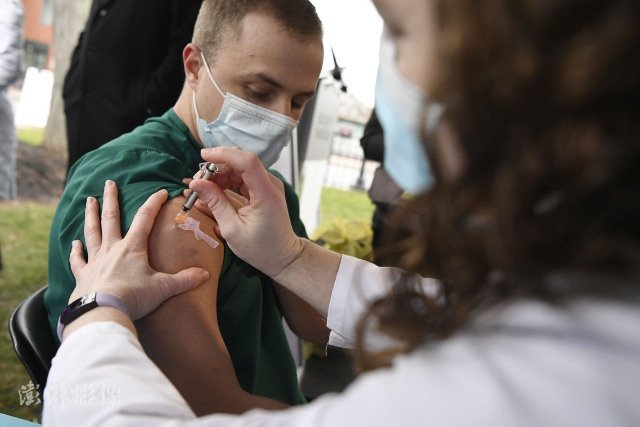Last week, the first batch of coronavirus vaccinations were launched in the United States, and medical staff and nursing home residents were identified as the first batch of vaccinations. On December 20, a federal committee in the United States recommended that people aged 75 and above and front-line essential workers be the next batch of vaccinations.
According to the Associated Press, the number of people aged 75 and above in the United States is about 20 million, and the number of front-line essential workers is about 30 million, including firefighters, police, school staff, food, agricultural and manufacturing workers, postal employees, etc.
On the 20th, the Advisory Committee on Immunization (ACIP) of the Centers for Disease Control and Prevention (CDC) made the recommended decision on vaccination by a 13-1 vote.
According to the introduction, immediately after the U.S. Food and Drug Administration (FDA) urgently authorizes a coronavirus vaccine, the Immunization Advisory Committee will meet to review the relevant data and vote on whether to recommend the vaccine, and vote to recommend which groups should be given priority.
The nation’s frontline essential workers are critical to the functioning of society and the economy, and are highly likely to be exposed to COVID-19 and at high risk of infection.
Meanwhile, data from the CDC show that people aged 75 and older account for about 8% of the total population in the United States. The group has a high rate of 25% of hospitalizations after COVID-19 and a high mortality rate.

The Advisory Committee on Immunization also voted that the next third batch of vaccinations in the United States should include a maximum of about 30 million people between the ages of 65 and 74; people between the ages of 16 and 64 and suffering from certain diseases, such as obesity and cancer, with a maximum number of about 110 million; and And a group of other important workers, including those working in food services and utilities, as well as those working in the legal, financial and media, are up to about 57 million.
However, the Associated Press pointed out that no matter how the U.S. Centers for Disease Control and Prevention provides guidance and advice, vaccine distribution and vaccination will vary from state to state in the United States.
The second vaccine in the United States has been released from the warehouse, and the number of vaccines is still in short supply.
On the 19th of this month, the Food and Drug Administration approved the emergency authorization application for the second coronavirus vaccine in the United States, Moderna.
At present, the Moderna vaccine, which has just been approved for three days, has been released from the warehouse. At the Mississippi factory, trucks carrying Moderna vaccine have left.
The Associated Press said that groups in urgent need of vaccines can start vaccination on Monday (20).
Nearly 8 million doses of vaccines will be distributed Monday, including about 5.9 million Moderna and about 2 million Pfizers, the federal government’s chief scientific adviser for vaccine distribution, said Moncef Slaoui..
The first round of vaccination in the United States began on December 15. According to U.S. media, about 2.9 million doses of Pfizer vaccine were shipped to health institutions across the United States last week for vaccination among medical staff and long-term elderly people in nursing homes.
As a result, the cumulative distribution of COVID-19 vaccines in the United States last week and this week is about 10.9 million doses.
However, the U.S. Centers for Disease Control and Prevention estimates that only about 556,000 Americans have been vaccinated.
Federal officials said that the supply of vaccines in the United States will be restricted in the next few months.
CDC officials expect that 20 million people will start vaccinated against the novel coronavirus in December, an increase of 30 million in January next year and another 50 million in February.
The cumulative number of about 100 million people in three months is less than one-third of the population of about 330 million people in the United States.
This means that the United States will not be able to complete the vaccination for most of the first vaccinated people, including 24 million medical staff and nursing home residents, until early January next year, according to the analysis of the Wall Street Journal.
Until some time next February, the United States will not provide enough vaccines for the 49 million second batch of vaccinators, including groups aged 75 and above and front-line essential workers. In addition, hundreds of millions of third batch of vaccines in the United States will wait longer.
Recently, after the large-scale vaccination work in the United States began, there have been frequent conditions, such as successive incidents of allergy to the recipients, the return of vaccines to the factory, and many state governments complain that the shipment of vaccines has decreased significantly.



